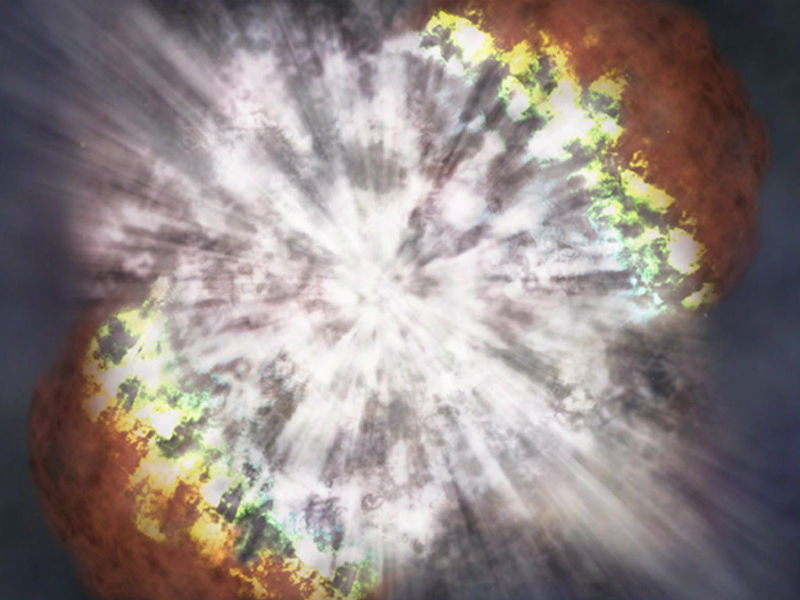
Scientists Spot Supernova 160-Million-Light-Years Away From Earth, Holds Clues to Death Throes of a Massive Star
In a celestial breakthrough, a team of Californian researchers have discovered an incredibly dazzling supernova, located some hundred million light-years away from the earth. Astronomers, during a research project, have captured the premature death throes of a gigantic star that was worn out in a terrible extraterrestrial explosion in a galaxy far from Earth.
On 6th October 2013 night, Dan Perley, the astronomer from the University of Copenhagen, spotted a bright fleck in the night skies by using one of the duo Keck Telescopes in Hawaii. Later, he confirmed the supernova to locate in the galaxy NGC 7610, some 166 million light-years away from the earth. After this discovery, Perley and his colleagues found the bright fleck to be worn out of supermassive space explosion. However, to confirm this, they immediately conducted an intermediate Palomar Transient Factory (iPTF) survey – a complete computerized review of the night sky that is in progress at the Palomar Observatory, California which is proven to spot and verify stellar objects.
Believed to be a red supergiant, holding the mass of times more than of the sun and many hundred times bigger too, the star was spotted in a twisting galaxy called ‘NGC7610’. It is located 160m light years away from the Earth in the constellation of Pegasus. According to the measurements of the dying star, given by scientists, it was masked in a 10bn-km-thick cloud of gas, the formation of which usually takes place when the material – equal to a thousand Earths flared off from the surface in the last year of the star’s existence. The explosion of the star made it blasted outwards at 10,000km (6,200 miles) per second, revealed the paper, published in the Nature Physics.
According to the researchers, initially, the star was already 10,000 times lighter than the sun. But its transformation into a supernova, resulted in the extremely intense dazzle, causing it to be visible from contemporary telescopes in orbit as well as from the Earth-based telescopes. Within three hours of the star reaching at Earth, scientists, using an observatory on Palomar Mountain near San Diego, California, detected the bright flash of the detonation. After witnessing the explosion, the scientists instantly alerted other telescope administrators who later quickly twisted their telescopes on the astral debris.
After capturing the sights of the death star explosion, scientists are now hopeful to frame supernovas in their early stage. The new report and research papers are believed to hold clues to the death throes of the massive stars.


